Trump to impose 100% tariff on China starting November 1
Introduction & Market Context
Virgin Galactic Holdings Inc (NYSE:SPCE) presented its first quarter 2025 earnings on May 15, highlighting significant cost reductions and manufacturing progress toward its next-generation spacecraft. The company’s stock responded positively in aftermarket trading, surging 14.63% to $3.84, reflecting investor optimism about the company’s strategic direction despite continued negative cash flow.
The space tourism pioneer is navigating a critical transition period as it focuses on building its next fleet of spacecraft while managing expenses. The presentation emphasized both manufacturing achievements and expanded business opportunities beyond consumer space tourism.
Quarterly Performance Highlights
Virgin Galactic reported modest revenue of $0.5 million for Q1 2025, down from $2.0 million in the prior year. However, the company made substantial progress in reducing its operating expenses to $89 million, a 21% decrease from $113 million in the same period last year.
As shown in the following financial results summary:
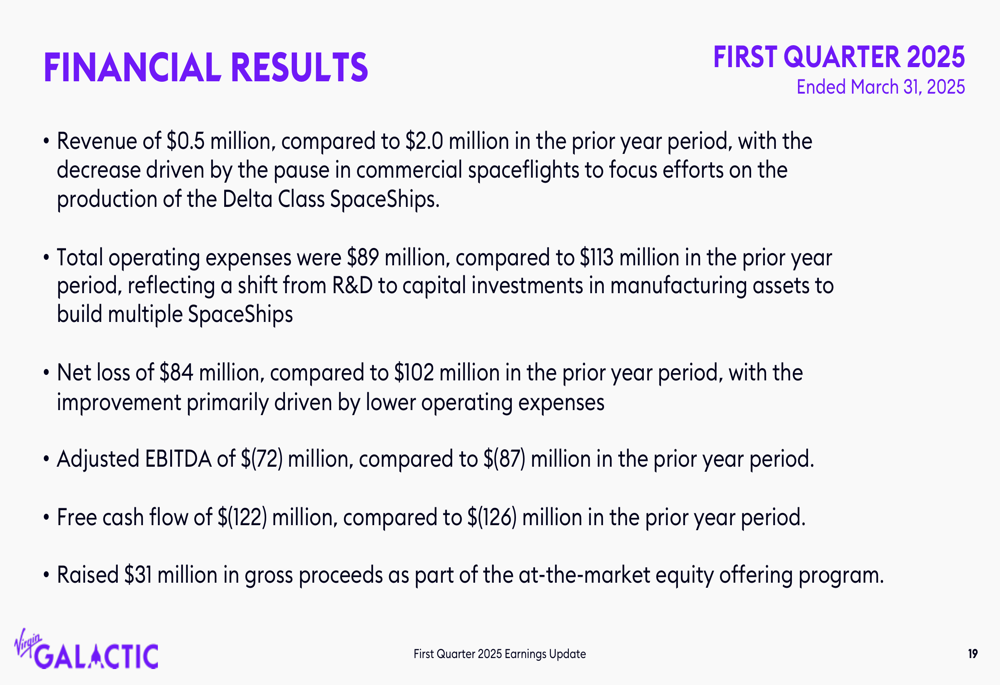
The company’s net loss improved to $84 million from $102 million year-over-year, while Adjusted EBITDA showed positive movement at $(72) million compared to $(87) million in the prior year. Free cash flow was $(122) million, slightly better than $(126) million in Q1 2024.
Virgin Galactic maintained a strong cash position of $567 million as of March 31, 2025, bolstered by raising $31 million through its at-the-market equity offering program. The company’s cash management and outlook are illustrated in the following chart:
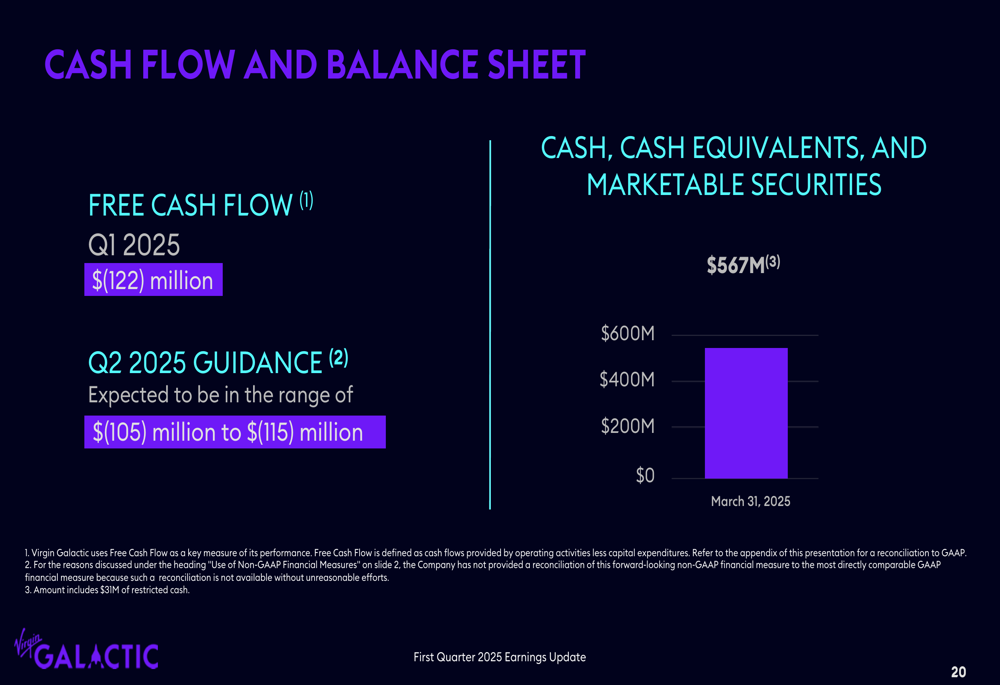
Strategic Initiatives & Manufacturing Progress
The presentation dedicated significant attention to Virgin Galactic’s manufacturing progress, showcasing various components of its next-generation spacecraft currently under development. The company is building multiple systems simultaneously, including propulsion, avionics, mechanical systems, and carbon fiber components.
The company highlighted its rocket motor system development, a critical component for future flights. As shown in this image of the oxidizer tank:
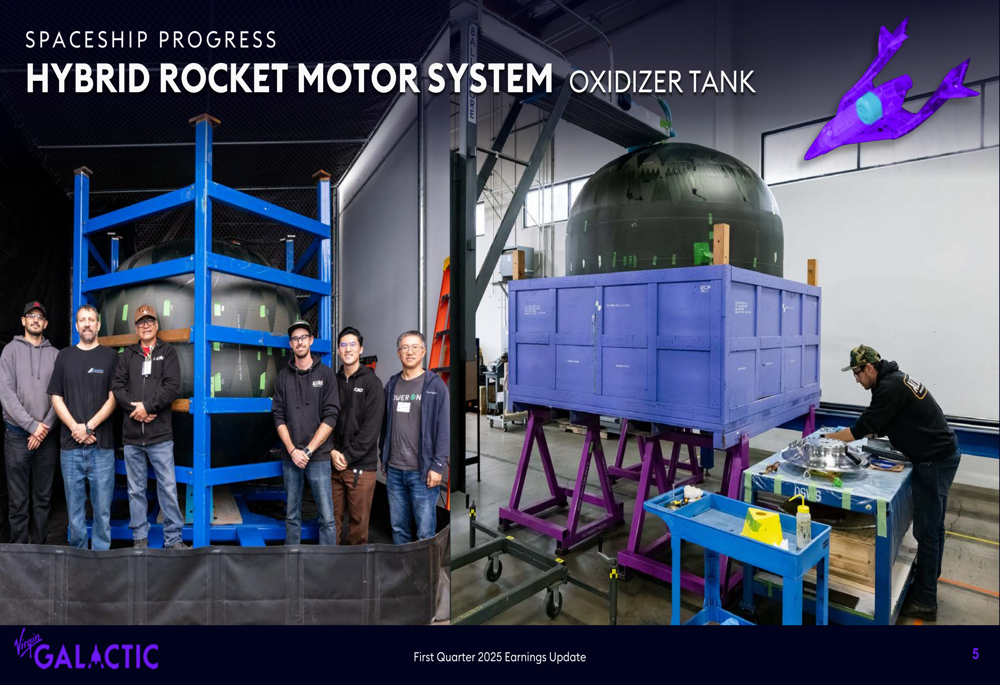
Virgin Galactic is also making progress on alternative commercial applications for its carrier ship platform, expanding potential revenue streams beyond space tourism. The company presented several opportunities for its technology:
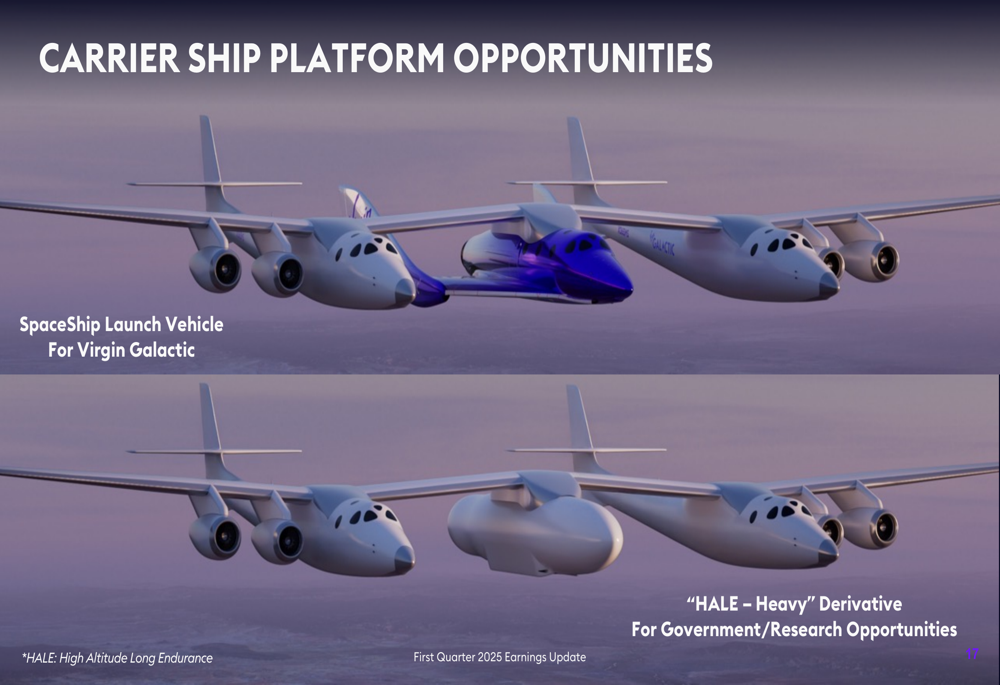
These alternative applications include government and research opportunities using a Heavy Altitude Long Endurance (HALE) derivative of its carrier platform, potentially opening new markets for the company.
Business Development Opportunities
Beyond consumer space tourism, Virgin Galactic outlined several emerging mission opportunities that could diversify its revenue streams. These include airborne research, intelligence and surveillance support, and command and control capabilities:
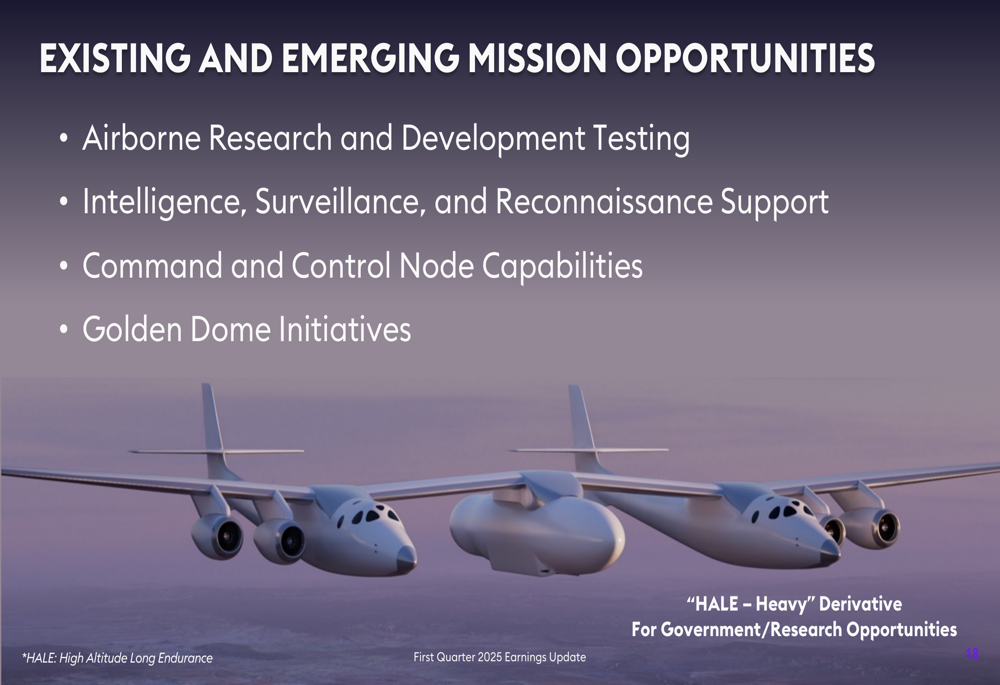
The company is positioning its technology for both commercial and government applications, potentially reducing its dependence on space tourism revenue while leveraging its aerospace expertise in multiple markets.
Forward-Looking Statements & Timeline
Virgin Galactic provided a clear timeline for its upcoming milestones, with key flight tests and commercial operations beginning in 2026:

The roadmap shows continued building and testing throughout 2025, with the first glide test flight scheduled for Spring 2026, followed by the first research spaceflight in Summer 2026, and the first private astronaut flight in Fall 2026.
The company also announced a bi-weekly content series titled "WE BUILD SPACESHIPS" debuting in June 2025, likely aimed at maintaining public interest and showcasing manufacturing progress during the development phase.
Financial Outlook
For Q2 2025, Virgin Galactic expects free cash flow to be between $(105) million and $(115) million, showing continued improvement in cash burn. The company’s increased capital expenditures of $46 million in Q1 (compared to $13 million in the prior year) reflect its shift from research and development to capital investments in manufacturing infrastructure.
According to the earnings call transcript, the company aims to reduce quarterly spending to below $100 million by Q4 2025, with long-term projections including $450 million in annual revenue and EBITDA of $90-100 million once operations scale up.
Virgin Galactic’s presentation demonstrates a strategic focus on manufacturing progress and cost management while maintaining a clear timeline toward commercial operations. While the company continues to operate at a loss, the improved financial metrics and manufacturing milestones appear to have resonated positively with investors as the company works toward its 2026 flight objectives.
Full presentation:
This article was generated with the support of AI and reviewed by an editor. For more information see our T&C.
